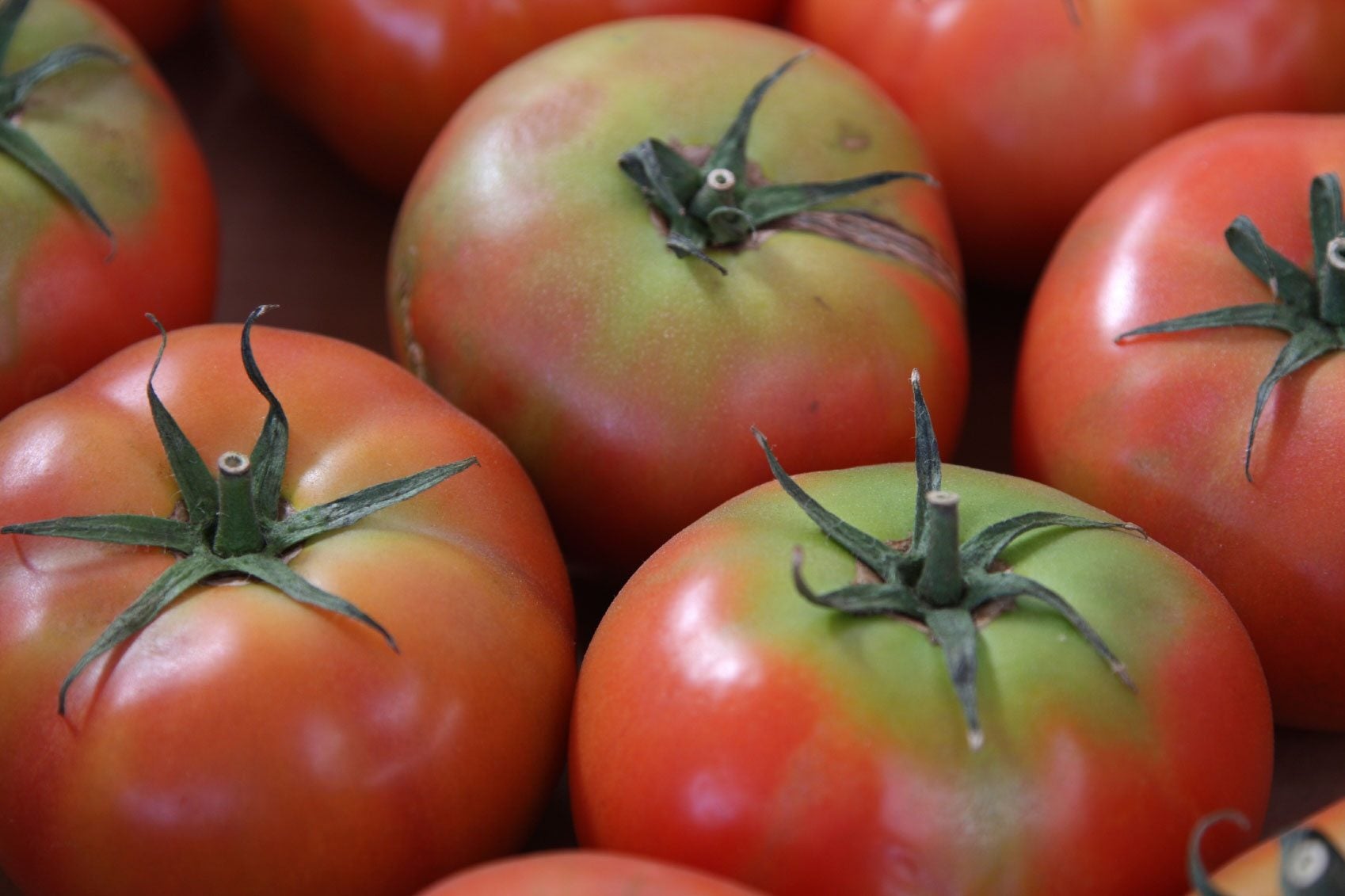Controlling Yellow Shoulders On Tomatoes: Information About Yellow Green Tomato Shoulders


There is nothing like those sweet, juicy red tomatoes of summer. What happens if your fruit persistently refuses to ripen all the way though, resulting in yellow shoulder disorder? The fruit starts to turn the ripe color but may only get yellow at the top near the core. Yellow shoulder in tomatoes is a common problem. Before your tomato tops turn yellow, learn about controlling yellow shoulders for beautiful, evenly ripe tomatoes.
Yellow Shoulder Disorder
Yellow or green tomato shoulders are the result of high heat. The shoulder of a tomato is that soft rounded area at the top that borders the stem scar. When it fails to color, the tomato isn't as visually appealing and lacks flavor and vitamins in that area. This is not a failure to ripen but an interior problem with the tissues.
Yellow shoulder in tomatoes can also be caused by seeds susceptible to the disease, low levels of potassium in soil, and alkaline pH levels. When tomato tops turn yellow instead of red or orange, check for these possible causes and see what you can do to minimize the problem by the next year.
Minimizing Yellow Shoulder Disorder
Rotate your tomato crops and perform a soil test before planting. Ensure that the pH is between 6.0 and 6.8. The soil should also contain a ratio of 3 percent of potassium by dry matter. You must increase potassium levels before fruit is more than 1 inch (2.5 cm.) across otherwise, it won't help.
Additionally, if you need to increase the acidity of the soil with sulfur or powdered citric acid, the best time to do this is the fall before you plant. This gives the area time to adjust and excess sulfur can percolate into the soil.
Yellow green tomato shoulders on fruits should not be left on the plant in an attempt to force them to ripen. It won't work and eventually the fruit will rot.
Controlling Yellow Shoulder
Avoid the problem entirely by purchasing seed stock that is resistant to yellow shoulder disorder. Carefully read tags that come with starts or ask your nursery person which varieties have a greater resistance.
Sign up for the Gardening Know How newsletter today and receive a free copy of our e-book "How to Grow Delicious Tomatoes".
You could try shading the plants with a row cover during the hottest and brightest part of the day. That may prevent incidents that arise from excess heat.
Be careful with the formula of plant food that you use. Formulas specially made for tomatoes will often have slightly higher levels of K or potassium, thereby helping prevent yellow shoulder disorder. Some locations are just prone to high pH levels and inadequate potassium and the associated limited calcium in soils.
In these areas, heavily amend beds with rich composted organic matter. Build raised beds and bring in fresh soil that is at the correct pH. Controlling yellow shoulders may take some preplanning and careful management in these zones.

Bonnie Grant is a professional landscaper with a Certification in Urban Gardening. She has been gardening and writing for 15 years. A former professional chef, she has a passion for edible landscaping.